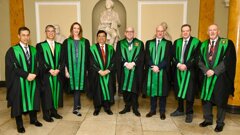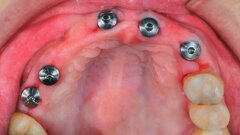SAN FRANCISCO, U.S.: Smoking remains a leading cause of oral cancer, and the tobacco product range is evolving with increasing use of non-cigarette tobacco products and dual use of multiple product types. New research conducted at the University of California, San Francisco has shown that most non-cigarette tobacco users are exposed to carcinogen levels comparable to or exceeding exposure among exclusive cigarette smokers—levels that are likely to place users at substantial risk.
The study was conducted by analysing data from the Population Assessment of Tobacco and Health, the first longitudinal study of tobacco use in the U.S. The data included urine samples from adults provided for investigation for tobacco-specific nitrosamines (TSNAs). These are one of the most significant groups of carcinogens in tobacco products and are formed from nicotine by a reaction that occurs during the curing and processing of tobacco.
Among the TSNAs included in the analysis were N-nitrosonornicotine (NNN), a known oral and esophageal carcinogen, and nitrosamine ketone (NNK), which is the most carcinogenic. Furthermore, 4-(methylnitrosamino)-1-(3-pyridyl)-1-butanol (NNAL), which is a metabolite of the lung carcinogen NNK, and total nicotine equivalents were evaluated.
For this study, 6,241 participants were categorized according to use of combustibles, which included cigarettes, cigars, water pipes, pipes and blunts—marijuana-containing cigars; smokeless; which consisted of moist snuff, chewing tobacco and snus; e-cigarettes; and nicotine replacement products. For each product, recent use was defined as within the previous three days and non-use defined as none within the past 30 days.
All tobacco use categories demonstrated elevated nicotine and TSNA concentrations relative to non-users. TSNA exposures were highest among smokeless tobacco users. Exclusive e-cigarette users were exposed to lower NNN and NNAL levels than other product users were, despite comparable nicotine exposure. However, most e-cigarette users concurrently used combustible tobacco, resulting in TSNA exposure similar to that of exclusive cigarette smokers.
The analysis showed that the vast majority of non-cigarette tobacco users were exposed to carcinogen levels comparable to or exceeding those among exclusive cigarette smokers, and this exposure is likely to place them at substantial risk of oral cancer.
The poster presentation, titled “Nicotine and carcinogen exposure by tobacco product type and dual-use,” was presented by Dr. Benjamin Chaffee from the University of California at the 96th General Session and Exhibition of the International Association for Dental Research, recently held in London.
BOSTON, U.S.: Electronic cigarettes are becoming increasingly popular. Although they are viewed by some as a safer alternative to smoking, their effects are...
Live webinar
Wed. 14 January 2026
10:30 pm IST (New Delhi)
Dr. Théo Laplane, Dr. Robert Gottlander DDS
Live webinar
Fri. 16 January 2026
10:30 pm IST (New Delhi)
Live webinar
Mon. 19 January 2026
11:30 pm IST (New Delhi)
Philipp Kopp, Michael Seeber
Live webinar
Thu. 22 January 2026
7:30 pm IST (New Delhi)
Prof. Judith Jones D.D.S; M.P.H., Prof. Kakuhiro Fukai D.D.S., Ph.D, Dr. Bathsheba (Bethy) Turton
Live webinar
Fri. 23 January 2026
12:30 am IST (New Delhi)
Dr. Nicola M. Grande DDS, PhD
Live webinar
Wed. 28 January 2026
6:30 pm IST (New Delhi)
Live webinar
Wed. 28 January 2026
9:30 pm IST (New Delhi)
Prof. Dr. Jan-Frederik Güth



 Austria / Österreich
Austria / Österreich
 Bosnia and Herzegovina / Босна и Херцеговина
Bosnia and Herzegovina / Босна и Херцеговина
 Bulgaria / България
Bulgaria / България
 Croatia / Hrvatska
Croatia / Hrvatska
 Czech Republic & Slovakia / Česká republika & Slovensko
Czech Republic & Slovakia / Česká republika & Slovensko
 France / France
France / France
 Germany / Deutschland
Germany / Deutschland
 Greece / ΕΛΛΑΔΑ
Greece / ΕΛΛΑΔΑ
 Hungary / Hungary
Hungary / Hungary
 Italy / Italia
Italy / Italia
 Netherlands / Nederland
Netherlands / Nederland
 Nordic / Nordic
Nordic / Nordic
 Poland / Polska
Poland / Polska
 Portugal / Portugal
Portugal / Portugal
 Romania & Moldova / România & Moldova
Romania & Moldova / România & Moldova
 Slovenia / Slovenija
Slovenia / Slovenija
 Serbia & Montenegro / Србија и Црна Гора
Serbia & Montenegro / Србија и Црна Гора
 Spain / España
Spain / España
 Switzerland / Schweiz
Switzerland / Schweiz
 Turkey / Türkiye
Turkey / Türkiye
 UK & Ireland / UK & Ireland
UK & Ireland / UK & Ireland
 International / International
International / International
 Brazil / Brasil
Brazil / Brasil
 Canada / Canada
Canada / Canada
 Latin America / Latinoamérica
Latin America / Latinoamérica
 USA / USA
USA / USA
 China / 中国
China / 中国
 Pakistan / Pākistān
Pakistan / Pākistān
 Vietnam / Việt Nam
Vietnam / Việt Nam
 ASEAN / ASEAN
ASEAN / ASEAN
 Israel / מְדִינַת יִשְׂרָאֵל
Israel / מְדִינַת יִשְׂרָאֵל
 Algeria, Morocco & Tunisia / الجزائر والمغرب وتونس
Algeria, Morocco & Tunisia / الجزائر والمغرب وتونس
 Middle East / Middle East
Middle East / Middle East




















































To post a reply please login or register